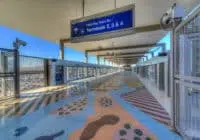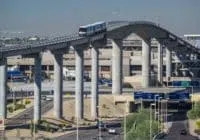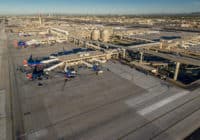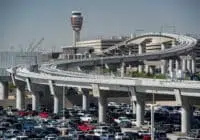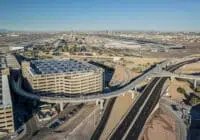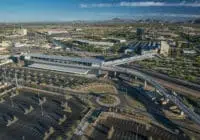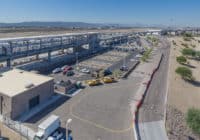Phoenix Sky Harbor International Airport (PHX) Automated People Mover (Sky Train)
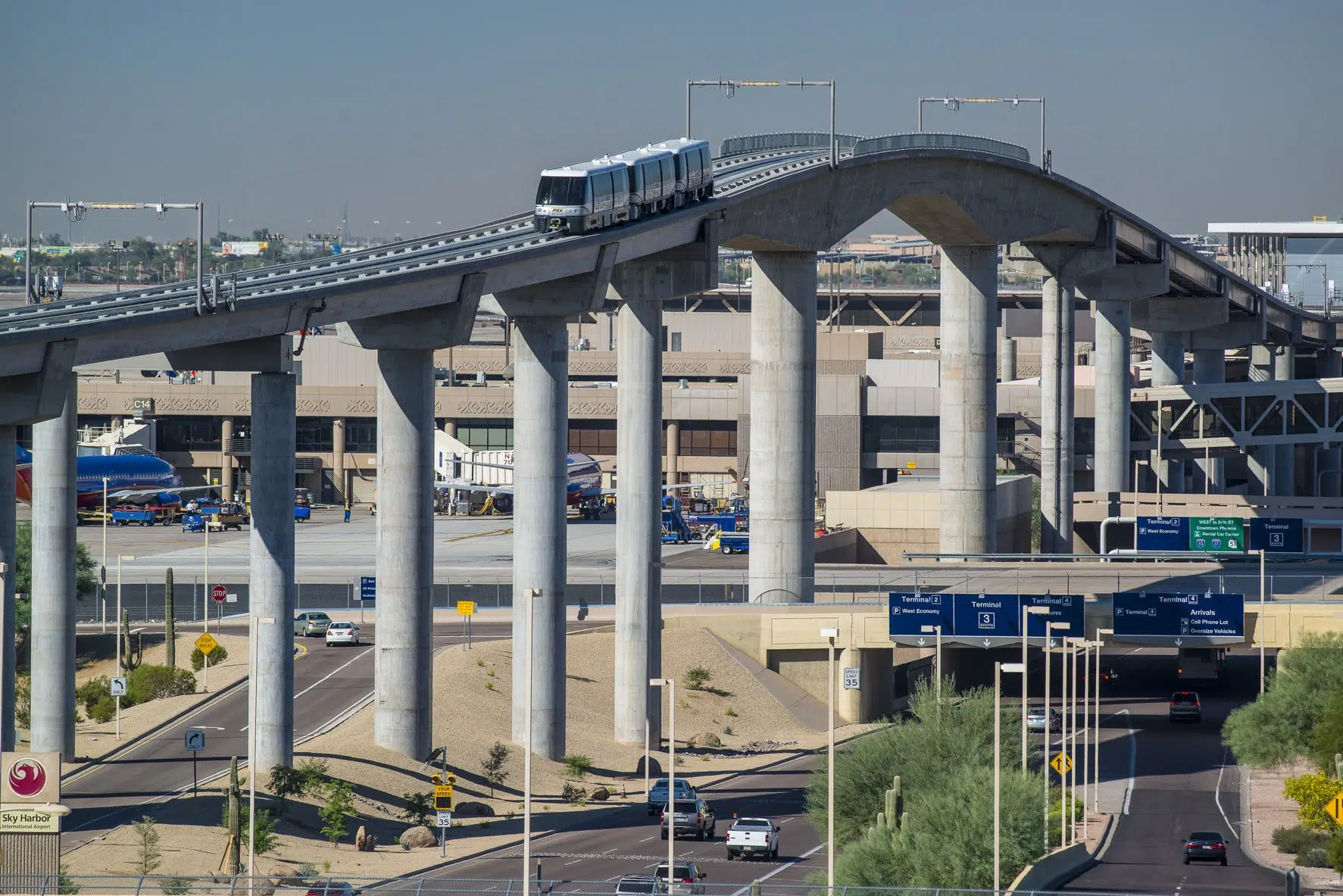
As one of the busiest airports in the nation for passenger traffic, the Phoenix Sky Harbor International Airport hosts nearly 44 million passengers and 440,00 aircraft annually. With projections of continued growth, the airport is tasked with reducing congestion and improving service for travelers, crew, and employees.
The PHX Sky Train® is an automated people mover that transports travelers between Valley Metro Rail at 44th and Washington streets, the East Economy Parking area, and airport terminals. The addition of Sky Train has drastically reduced the need for airport shuttle busses and, ultimately, landside traffic.
Since 2003, Kimley-Horn has provided planning, design, and construction support services as the civil designer for the $1.6 billion people mover program. This project includes the design of civil improvements throughout the airport as part of the automated train project, including extensive roadway, parking, traffic, storm drainage pipe networks and retention basins, utility relocations, lighting, and striping. Challenges for the Kimley-Horn team have included an aggressive design schedule, a narrow and highly urbanized design corridor, and coordination with public and private utilities.
Phoenix Sky Harbor International Airport
Our first tasks were to establish a need, justification, and scope of the project, define the train alignment and station locations, prepare program budgets, and review impacts and required improvements to existing facilities. As part of this initial phase, our services included preparation of train alignment alternatives, review of airspace restrictions and right-of-way, roadway and curbfront simulation modeling, passenger forecast modeling, and review of regional freeway access routes to the airport and train stations. Additionally, the Kimley-Horn team reviewed alternative connections to regional transit corridors and light rail stations, studied train maintenance and storage facility sites, expansion of economy parking lots and garages, and performed traffic analyses for all airport roadways and access routes.
Stages 1 and 1A
Stage 1 of Sky Train opened to the public in April 2013, providing passenger connections between PHX’s Terminal 4, the East Economy Parking Lot, and the 44th Street Station which includes a passenger bridge and moving walkways to the City’s light rail station. Stage 1A, which opened in early 2015, extends the Sky Train from Terminal 4 to Terminal 3 and provides passenger access to all terminals.
Kimley-Horn’s services included the preparation of alignments and plan/profile geometrics for the train guideway, planning and simulation modeling, ground transportation center (GTC) planning and design, roadway design, parking/revenue control systems, East Economy Parking Lot reconfiguration and toll plaza relocation, utility relocations, structures and retaining walls, communications design, and the civil layout for access roads and terminal curbfront areas. The train guideway design included and aerial crossing of Taxiway R and under-crossings of Taxiways S and T.
Stage 2
Stage 2 of Sky Train began in late 2016 and is currently ongoing. This stage will provide an extension of the existing Sky Train from Terminal 3 to the Rental Car Center. Kimley-Horn is providing planning, design and construction support services for this stage of the project.
Our planning and design activities include the development of the Stage 2 train alignment geometrics, design of a new Ground Transportation Staging Complex, design of roadways and site/civil improvements, West Economy parking modifications, extensive storm drainage improvements including surcharge basins, detention basins, underground storage tanks and lift stations. Kimley-Horn is the structural designer for all the on-grade guideway structures including the covered crossing under Interstate 10 and a depressed under-crossing for the future Taxiways U and V with an adjacent airside service road. Additionally, Kimley-Horn is responsible for the electrical and communications infrastructure design for the entire project, including the propulsion power backbone, substations, fiber optic network, station electrical service and communications devices within each of the train stations.
Project Recognition
- Envision Gold Award; The Institute for Sustainable Infrastructure

